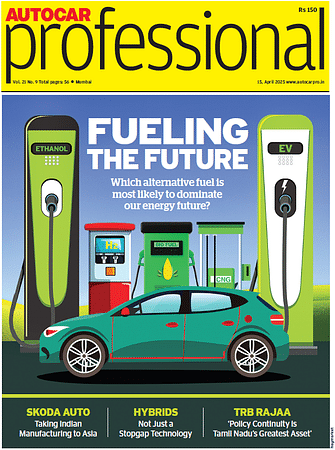Tech Talk: How simulators are shaping ADAS technology
Simulators have come a long way in a short space of time and are helping manufacturers develop new software for advanced driver assistance systems for road cars.
For manufacturers of full-sized driver-in-loop motion simulators such as Dynisma and Ansible Motion, the complexity of today’s road cars and the difficulty manufacturers face in designing them can only be good news.
Dynisma, which makes the Formula 1-grade Dynisma Motion Generator (DMG) and is McLaren Automotive's motion simulator partner, sees a new role for its product in developing advanced driver assistance systems (ADAS) for road cars.
Motion simulators are a combination of complex software and mechanics. The first creates the illusion of the world outside using a sophisticated computer model while the second generates the movement a simulator driver’s eyes tell them they should be feeling.
The challenge for simulator designers is something called latency – a delay between the visuals the computer model generates on screen and what the driver is expecting based on their actions and sensations.
In a real car, there is no latency: what the driver sees and feels are simultaneous. But however tiny, that delay in a simulator can make it difficult to get a true feeling for how the real thing would react to the driver’s inputs, say, when a car oversteers.
In the real world, a delay in reacting could mean the difference between a great save or an excursion into the undergrowth. It can also make drivers feel queasy.
How much latency is too much? Surprisingly, it’s an unthinkably small slice of time. The blink of an eye is variously reported as taking from between 100 and 400 milliseconds.
The F1 requirement for a motion simulator is less than four milliseconds, which is the time Dynisma claims for its own system.
That’s a virtually instantaneous response, says the company. It’s also fast enough to develop ADAS in simulation, such as lane keeping assistance, lane departure warning, emergency lane keeping and autonomous emergency braking.
Dynisma also has its sights set on the complex question of the handover from a vehicle driving autonomously beyond level two back to the human driver. Here, the safe environment of a simulator makes it possible to evaluate many different scenarios much more quickly.
The DMG can be used to assess passenger comfort in those scenarios too. The same simulator can also be employed in the fields of vehicle dynamics, aerodynamics, propulsion systems, noise, vibration and harshness, control systems, human-machine interface and user experience.
Dynisma expects a further use for its DMG will come next year when a new European small-series type approval regulation will dictate that small-volume manufacturers will have to adopt ADAS in their vehicles.
RELATED ARTICLES
Earth Day 2025: Saving our planet by reducing emissions and applying 3R
Earth Day is every day, and anywhere you are. And in a time of rapid and adverse climate change, it’s the last call for ...
How Hyundai Is Building the Factory of the Future in India Using AI and ML
AI, ML, and robotics power manufacturing agility at Chennai and Talegaon.
Gensol EV: Shiny Expo, Silent Factory
The dramatic unravelling of Gensol Electric Vehicle’s Pune operations—marked by no production, job cuts, and allegations...






 31 Aug 2024
31 Aug 2024
 6113 Views
6113 Views












 Autocar Professional Bureau
Autocar Professional Bureau



 Shahkar Abidi
Shahkar Abidi

